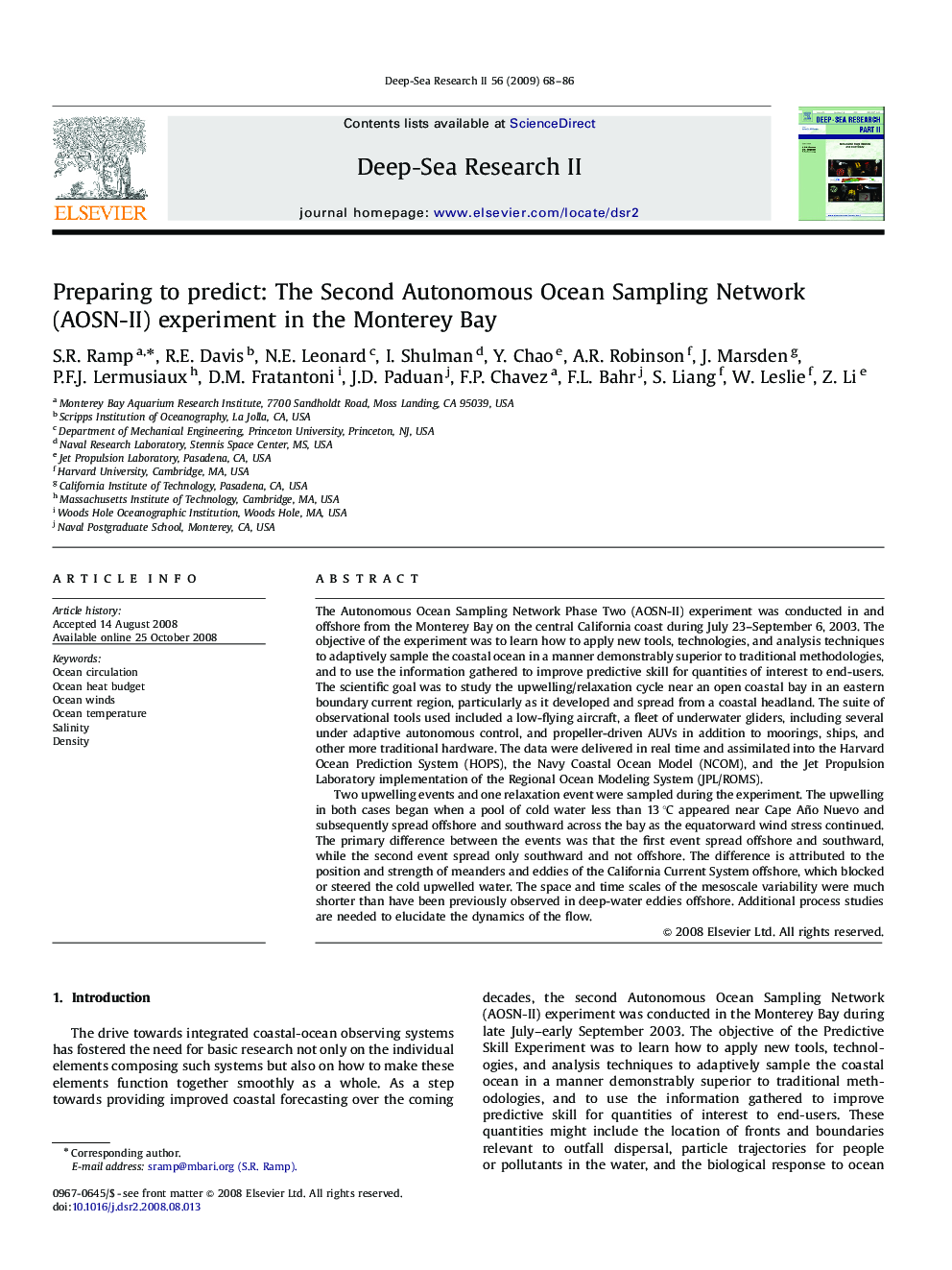| کد مقاله | کد نشریه | سال انتشار | مقاله انگلیسی | نسخه تمام متن |
|---|---|---|---|---|
| 4537237 | 1626487 | 2009 | 19 صفحه PDF | دانلود رایگان |

The Autonomous Ocean Sampling Network Phase Two (AOSN-II) experiment was conducted in and offshore from the Monterey Bay on the central California coast during July 23–September 6, 2003. The objective of the experiment was to learn how to apply new tools, technologies, and analysis techniques to adaptively sample the coastal ocean in a manner demonstrably superior to traditional methodologies, and to use the information gathered to improve predictive skill for quantities of interest to end-users. The scientific goal was to study the upwelling/relaxation cycle near an open coastal bay in an eastern boundary current region, particularly as it developed and spread from a coastal headland. The suite of observational tools used included a low-flying aircraft, a fleet of underwater gliders, including several under adaptive autonomous control, and propeller-driven AUVs in addition to moorings, ships, and other more traditional hardware. The data were delivered in real time and assimilated into the Harvard Ocean Prediction System (HOPS), the Navy Coastal Ocean Model (NCOM), and the Jet Propulsion Laboratory implementation of the Regional Ocean Modeling System (JPL/ROMS).Two upwelling events and one relaxation event were sampled during the experiment. The upwelling in both cases began when a pool of cold water less than 13 °C appeared near Cape Año Nuevo and subsequently spread offshore and southward across the bay as the equatorward wind stress continued. The primary difference between the events was that the first event spread offshore and southward, while the second event spread only southward and not offshore. The difference is attributed to the position and strength of meanders and eddies of the California Current System offshore, which blocked or steered the cold upwelled water. The space and time scales of the mesoscale variability were much shorter than have been previously observed in deep-water eddies offshore. Additional process studies are needed to elucidate the dynamics of the flow.
Journal: Deep Sea Research Part II: Topical Studies in Oceanography - Volume 56, Issues 3–5, February 2009, Pages 68–86